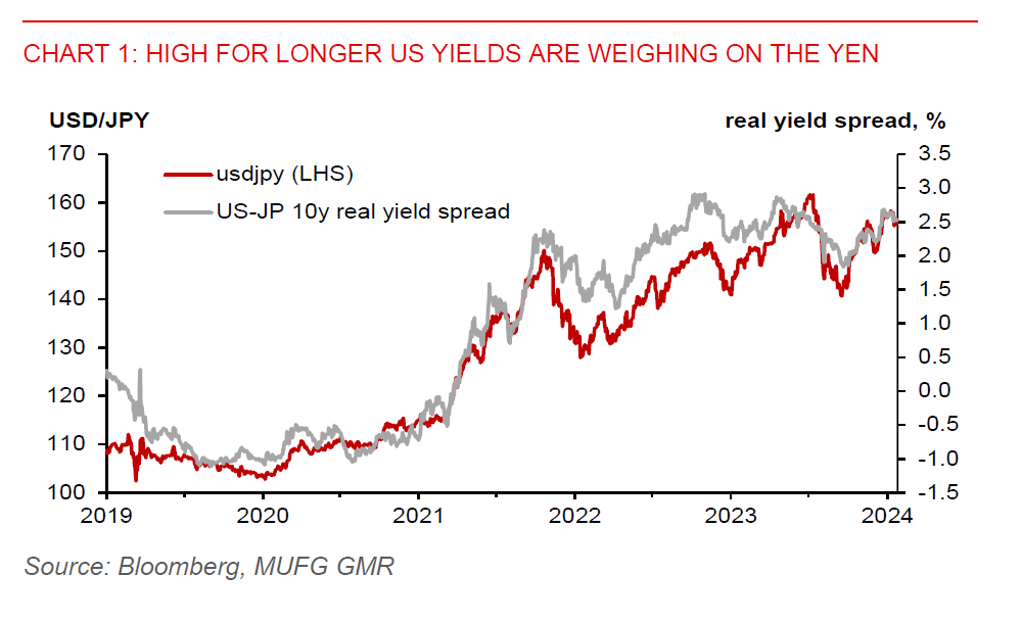Ahead Today
G3: US initial jobless claims, eurozone consumer confidence
Asia: Thailand trade, Singapore CPI, Taiwan industrial production
Market Highlights
There was no specific mention about China tariff on Trump’s Day 1 in office. But it didn’t take long for Trump to reiterate his threat of imposing tariffs on Chinese imports. He said that his government is mulling about a 10% tariff on top of existing levies on Chinese imports, and that it could be implemented as early as 1 February, the same date he has threatened to impose 25% tariffs on Mexico and Canada. His tariff threats have widened to include the European Union on his second day in office.
Despite his tariff threats, the broad US dollar index (DXY) has weakened to the 108.00-level. Markets likely perceived that there will be gradual and less aggressive tariff hikes. And there could be some covering of long US dollar positions. Actions taken by Trump so far is to order government agencies to review trade practices, which will be reported on 1 April. A 10% tariff on Chinse imports would also be a far cry from the 60% he had threatened during his election campaign. We believe Trump still intends to raise tariffs, though markets may avoid a worst-case scenario of a 60% tariff on Chinese imports and a universal 10%-20% tariff.
Meanwhile, USDJPY has weakened, finding support at the 155.00 level. Without any negative Trump surprises so far, the BoJ could proceed with its rate hike tomorrow. However, any positive impact on yen may be contained, with markets already pricing in the tighter policy move and given elevated US yields.

Regional FX
Asian currencies broadly strengthened against the US dollar in Wednesday’s session, with the ringgit (+0.9%) and Thai baht (+0.8%) leading gains in the region. Without any tariff announcement, recent strength in regional currencies could continue in the coming week. However, a follow-through of Trump’s threats to impose tariffs on China, Mexico, Canada, and EU on 1 February could put renewed depreciatory pressure on Asian currencies.
Recent ringgit strength could extend to the 4.4000-level. Bank Negara Malaysia (BNM) has maintained a neutral monetary policy stance, keeping its policy rate unchanged at 3.00% this month. This is unlike several other regional central banks, which have cut rates in support of slowing growth. BNM has a positive outlook for growth, despite global uncertainties, while it expects inflation to remain manageable within a range of 2.0%-3.5%, taking account of government plans to rationalize RON95 fuel subsidies in mid-2025. CPI inflation was just 1.7%yoy in December versus 1.8%yoy in November.
USDIDR has softened to below 16,300 after rising to nearly the 16,400-level. We maintain our outlook for USDIDR at 16,250 in Q1 2025. The government will now require commodity firms to keep all their foreign currency proceeds onshore for at least one year. The new rule will take place on 1 March, replacing existing rule requiring commodity exporters to keep 30% of their FX proceeds onshore for 3 months. The policy move aims to support the rupiah through shoring up USD liquidity onshore and bolstering the foreign reserves. Bank Indonesia is also preparing FX deposit instruments for commodity exporters to place their proceeds.
Lastly, we think the latest decline in USDSGD may be contained. This, along with MAS likely to ease policy tomorrow, lead us to maintain our forecast for USDSGD to rise to 1.3800 by end-Q1. Indeed, the central bank could start policy easing this month, given well entrenched disinflation. Core CPI data today could show the year-on-year rate is likely to step down further to 1.7%yoy in December, or possibly lower, from 1.9%yoy in November.
